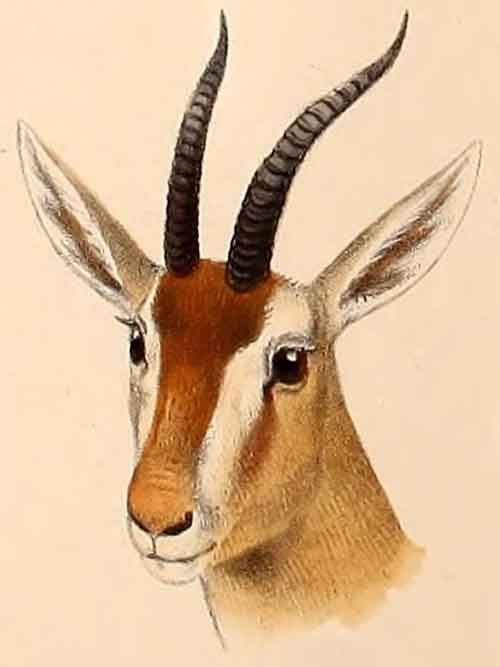
Superregnum: Eukaryota
Cladus: Unikonta
Cladus: Opisthokonta
Cladus: Holozoa
Regnum: Animalia
Subregnum: Eumetazoa
Cladus: Bilateria
Cladus: Nephrozoa
Superphylum: Deuterostomia
Phylum: Chordata
Subphylum: Vertebrata
Infraphylum: Gnathostomata
Megaclassis: Osteichthyes
Cladus: Sarcopterygii
Cladus: Rhipidistia
Cladus: Tetrapodomorpha
Cladus: Eotetrapodiformes
Cladus: Elpistostegalia
Superclassis: Tetrapoda
Cladus: Reptiliomorpha
Cladus: Amniota
Cladus: Synapsida
Cladus: Eupelycosauria
Cladus: Sphenacodontia
Cladus: Sphenacodontoidea
Cladus: Therapsida
Cladus: Theriodontia
Cladus: Cynodontia
Cladus: Eucynodontia
Cladus: Probainognathia
Cladus: Prozostrodontia
Cladus: Mammaliaformes
Classis: Mammalia
Subclassis: Trechnotheria
Infraclassis: Zatheria
Supercohors: Theria
Cohors: Eutheria
Infraclassis: Placentalia
Cladus: Boreoeutheria
Superordo: Laurasiatheria
Cladus: Scrotifera
Cladus: Ferungulata
Cladus: Euungulata
Ordo: Artiodactyla
Cladus: Artiofabula
Cladus: Cetruminantia
Subordo: Ruminantia
Cladus: Pecora
Superfamilia: Bovoidea
Familia: Bovidae
Subfamilia: Antilopinae
Genus: Eudorcas
Species: †Eudorcas rufina
Name
Eudorcas rufina (Thomas, 1894)
Synonyms
Gazella rufina Thomas, 1894
References
Eudorcas rufina in Mammal Species of the World.
Wilson, Don E. & Reeder, DeeAnn M. (Editors) 2005. Mammal Species of the World – A Taxonomic and Geographic Reference. Third edition. ISBN 0-8018-8221-4.
IUCN: Eudorcas rufina (Thomas, 1894) (Data Deficient)
Vernacular names
magyar: Vörös gazella, algériai gazella
日本語: アカガゼル
The red gazelle (Eudorcas rufina) is an extinct species or subspecies of gazelle. It was formerly considered a member of the genus Gazella within the subgenus Eudorcas before Eudorcas was promoted to a full genus. It is thought to have lived in the better-watered mountain areas of North Africa rather than in deserts, because of the rich colouring on the coat.
There are no records of the red gazelle in the wild.[2] It is known from three specimens purchased in markets in Algiers and Oran, northern Algeria, in the late 19th century. They are held in museums in Paris and London. Some authorities, such as Jonathan Kingdon, consider it a subspecies of the red-fronted gazelle (E. rufifrons or G. rufifrons).[3] In 2008, K. de Smet reported one of the three specimens had proved on examination to be E. rufifrons, leading the IUCN Red List to revise its assessment of the species from Extinct to Data Deficient on the basis of doubts as to the validity of the taxon.[2] The red-fronted gazelle occurs in the Sudanian savanna ecoregion, south of the Sahara. The red gazelle occurred north of the Sahara, thereby representing a distinct population irrespective of its species or subspecies status.
Physical characteristics
The red gazelle is described as larger than the red-fronted gazelle, with heavier hooves, and distinctive bright red-brown fur. It is characterized to have thin (2.5–4 cm wide) black stripes across its flanks, in between its rear and front legs. The top of the head, cheeks, and sides of the neck are a pale whitish color, while the undersides and rump are a plain white colour. The center of its face is bordered on both side by pale streaks running from the eyes to the snout. It has a rufous tail with a black tip.[4]
References
Grubb, P. (2005). "Eudorcas rufina". In Wilson, D.E.; Reeder, D.M (eds.). Mammal Species of the World: A Taxonomic and Geographic Reference (3rd ed.). Johns Hopkins University Press. pp. 637–722. ISBN 978-0-8018-8221-0. OCLC 62265494.
IUCN SSC Antelope Specialist Group (2008). "Eudorcas rufina". IUCN Red List of Threatened Species. 2008: e.T8974A12944313. doi:10.2305/IUCN.UK.2008.RLTS.T8974A12944313.en. Retrieved 24 December 2017.
Kingdon, Jonathan (1997). The Kingdon Field Guide to African Mammals. San Diego: Academic Press. pp. 411–412. ISBN 0-12-408355-2.
Huffman, Brent. "Eudorcas rufina, Red Gazelle." Ultimateungulate. Ultimateungulate, 20 Feb 2013. Web. 22 April 2013. http://www.ultimateungulate.com/Artiodactyla/Eudorcas_rufina.html
Further reading
Flannery, Tim & Schouten, Peter (2001). A Gap in Nature: Discovering the World's Extinct Animals. Atlantic Monthly Press, New York. ISBN 0-87113-797-6.
Retrieved from "http://en.wikipedia.org/"
All text is available under the terms of the GNU Free Documentation License

